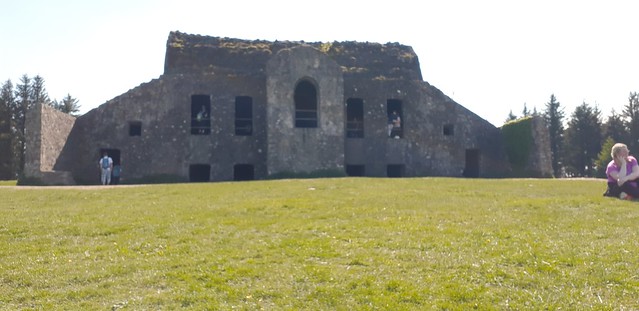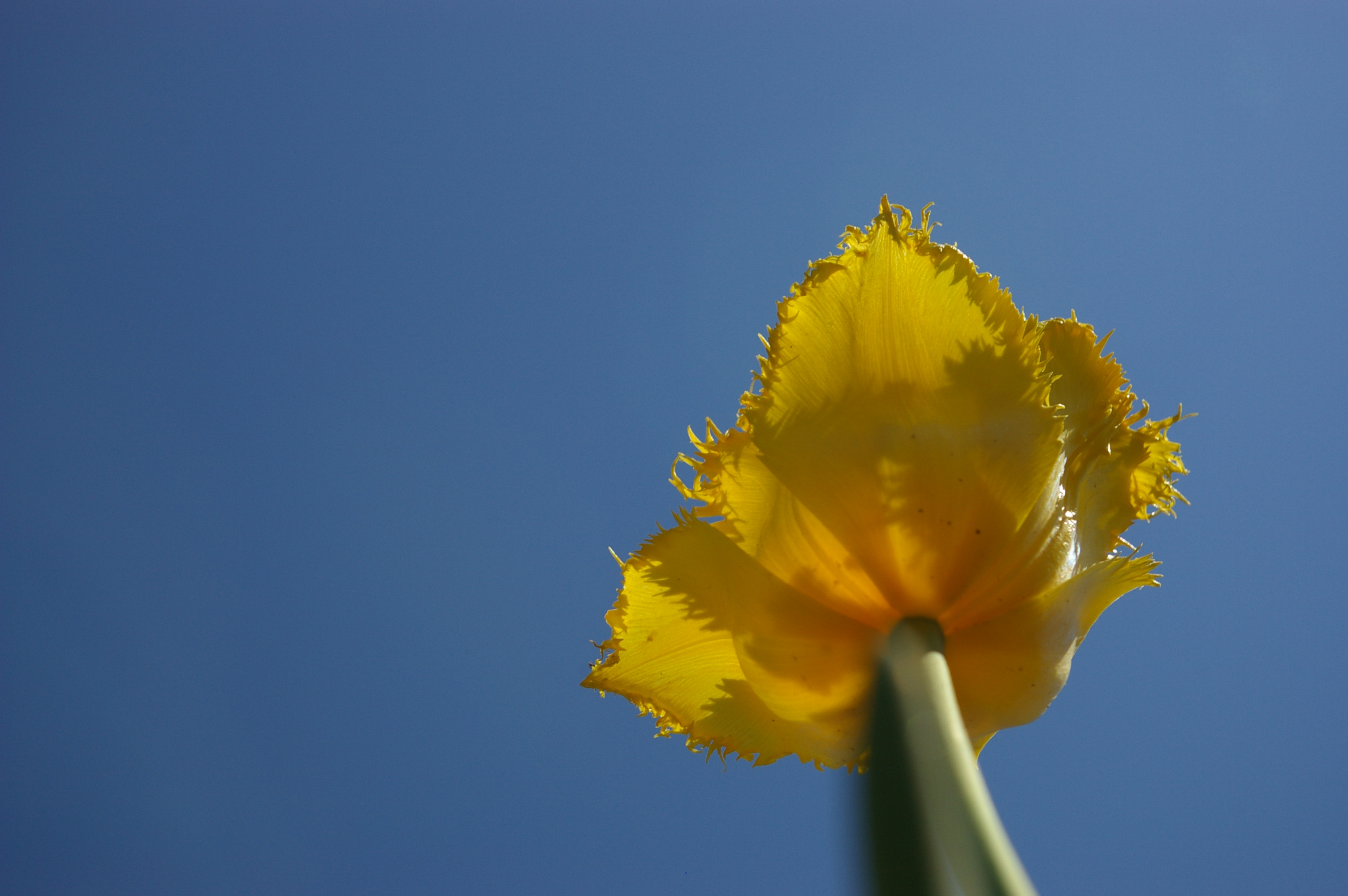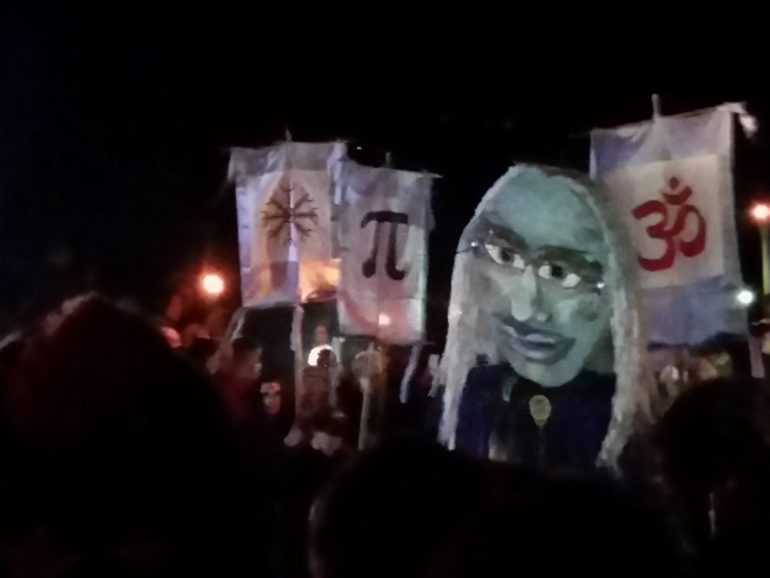February 1st marks the festival of Imbolc, Imbolic, or Imbolg, also called Brigid’s Day. It is one of the four Gaelic seasonal festivals—along with Beltane, Lughnasadh and Samhain which were important in ancient times. Historically, the day was used for marking the beginning of spring, more specifically the lambing season and stirrings of new life. The original word Imbolg means ‘in the belly’, as in pregnant or expectant. The day holds the promise of hope, renewal, and life force stirring as the light returns to the earth and the growth cycle starts anew. It is believed that Imbolic was originally a pagan festival associated with the mythical fire goddess Brigid (Brighit,Bride, Brigit) and is a time of magical energy related to the feminine aspect. Eventually, this festival to celebrate the Goddess became Christianized into a festival of Saint Brigid.
 What do we know about Brigid?
What do we know about Brigid? We know that as a Goddess, she was worshiped by the Filid, a class of poets and historians among the Celts of ancient Ireland and Britain. Her name comes from the Celtic “brig” or “exhalted one”, and she was one of 3 daughters of the god-king Dagda. (Brigid’s sisters were also named Brigid and are associated with healing and smith crafts, making her a “triple goddess”). Brigid was considered one of the most powerful Celtic gods, and part of her story appears in the saga Cath Maige Tuired and the Lebor Gabála Érenn, a purported history of Ireland collected from various poems and texts in the 10th century.
Legends say that Brigid was born with a flame in her head and drank the milk of a mystical cow from the spirit world. Brigid is credited with the very first keening, a traditional wailing for the dead practiced at funerals by Irish and Scottish women. As a goddess, Brigid was the goddess of fire, sun and hearth. It was believed that Brigid brought fertility to the land and its people and was known to be a protector of healers, midwives, and newborn babies. She was also a poet.
The Goddess Converts to Christianity? Like the Goddess of old, the real woman, St. Brigid lived in a time of transition and played a powerful role. She was a nun, Abbess, and foundress of several monasteries. She is one of Ireland’s three Patron Saints, and monks wrote about her going back to the 8th century (though it was likely they were merging the Goddess legends and the Abbess’s life to encourage religious conversions and attach “miracles” from the Goddess to the Saint.) Saint Brigid was born in approximately 450 A.D., to a Christian pict slave, Brocca (who was converted to Christianity by St.Patrick) and the chieftain of Leinster Dubhthach, at the hill of Faughart, in County Louth. Because her mother had been sold while pregnant at the behest of Dubhthach’s wife, Brigid was born into slavery. When Brigid was about 10 years old, her owner wanted to sell her – and went to her father (the Chieftain) to arrange for the sale. According to legend, she became a household servant to her father, who eventually set her free. From there, Brigid went into a Nunnery. In about 468 A.D. She was granted Abbaital powers, and in 480 A.D. founded the monastery at Kildare (Celtic – Cill Dara or “church of the oaks”). The monastery itself was established on the site of a former pagan shrine dedicated to her namesake, the Celtic Goddess Brigid. In time, she was credited with setting up religious life for women in Ireland, founding a school of art, a scriptorium (the Book of Kildare was illuminated here), and founded many churches. She also became friends with St. Patrick. St. Brigid died around 525 A.D.
How do we celebrate Brigid and what are the traditions? Celtic practices honored the Goddess Brigid by decorating altars with snowdrops, swan feathers, sheep, Bridey dolls (A handmade Brigid doll filled with wool, herbs, dried flowers, crystals, prayers and wishes for the future, then decorated and which can be included in ceremony and/or placed in ‘Bride’s Bed’ to bring fertility and good fortune to the home), and later, St. Brigid crosses made from reeds. Ashes from the fire that was left to burn all night long would be smoothed out and left to see if a mark from Bridget appeared, to confirm that she had visited the house. Sometimes a makeshift bed would even be made up next to the fire, in case the saint wanted to rest a while. Finally, many homes also had white and green candles and a ceremony led by women priestesses who lit and tended an eternal flame in her honor, a practice which continued long after Christianity renamed and adopted the Goddess into Saint Brigid. Gerald of Wales (Giraldus Cambrensis) a Welsh Chronicler, visited Kildare in the twelfth century, he reported that the fire of St. Brigid was still burning in Kildare and that it was being tended by nuns of St. Brigid. That flame (despite unsuccessful attempts to extinguish it) is known to have survived possibly up to the sixteenth century, when the monasteries were dissolved by Henry the VIII. The eternal flame was re-lit in 1993, and the today is maintained by 19 nuns in Market Square and at Brigid’s sanctuary at Solas Bhride, in Kildare, Ireland. Kildare is also the location of one of several sacred wells in the Celtic regions, many of which are connected to Brighid. On St Brighid’s day, it’s not uncommon to see ribbons and other offerings tied to trees near a well as a petition to this healing goddess-turned-saint.
Today, we take a breath and repeat the ancient sung through the ages: “Brigid, excellent woman, sudden flame, may the bright fiery sun take us to the lasting kingdom.”
Imbolic Blessings and Happy Spring from Ireland!
Pictured: St. Brigid figurine and wishing tree at the St.Brigid’s Holy Well at the Hill of Faughart
 Sunday 21C and Sun. What to do? Get out and hike to #hellfireclub on Montpelier Hill, in the #dublin Mountains. It’s a short and relatively easy walk (minus the steep part at the very beginning) from the parking area to the top, where the ruins of an old hunting lodge is located. (Scroll to the bottom for my tiktok video of the trip).
Sunday 21C and Sun. What to do? Get out and hike to #hellfireclub on Montpelier Hill, in the #dublin Mountains. It’s a short and relatively easy walk (minus the steep part at the very beginning) from the parking area to the top, where the ruins of an old hunting lodge is located. (Scroll to the bottom for my tiktok video of the trip).  Originally there was a passage grave with a cairn at the top of the hill, but these were dismantled around 1725, when stones were re-used for a new building. At the time, Parliament Speaker Conolly, one of the wealthiest men in Ireland, built a two bedroom hunting lodge on top of the old site, which he named ‘The Brass Castle’. Shortly after completion, a storm blew the roof off. Local Irish folklore says that this was the of the Devil – as a punishment for interfering with the burial cairn.
Originally there was a passage grave with a cairn at the top of the hill, but these were dismantled around 1725, when stones were re-used for a new building. At the time, Parliament Speaker Conolly, one of the wealthiest men in Ireland, built a two bedroom hunting lodge on top of the old site, which he named ‘The Brass Castle’. Shortly after completion, a storm blew the roof off. Local Irish folklore says that this was the of the Devil – as a punishment for interfering with the burial cairn. 



